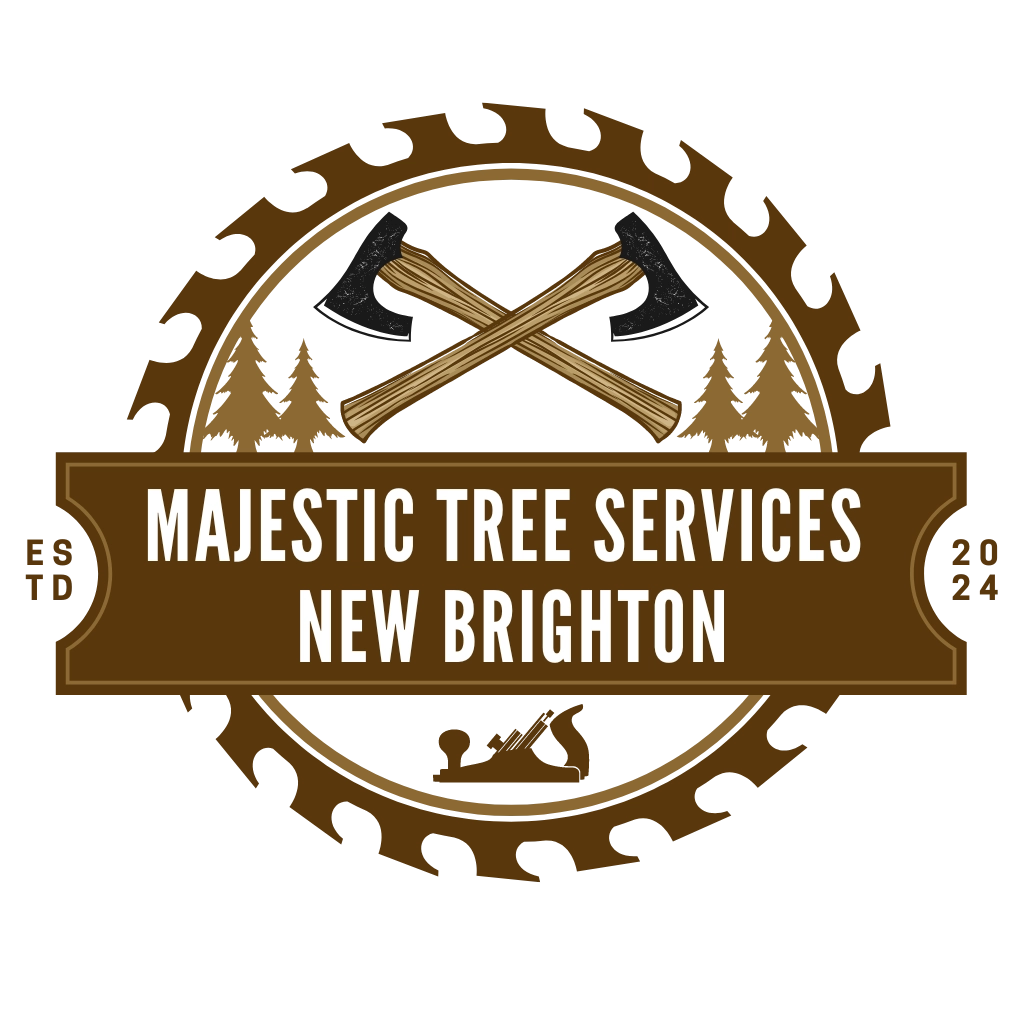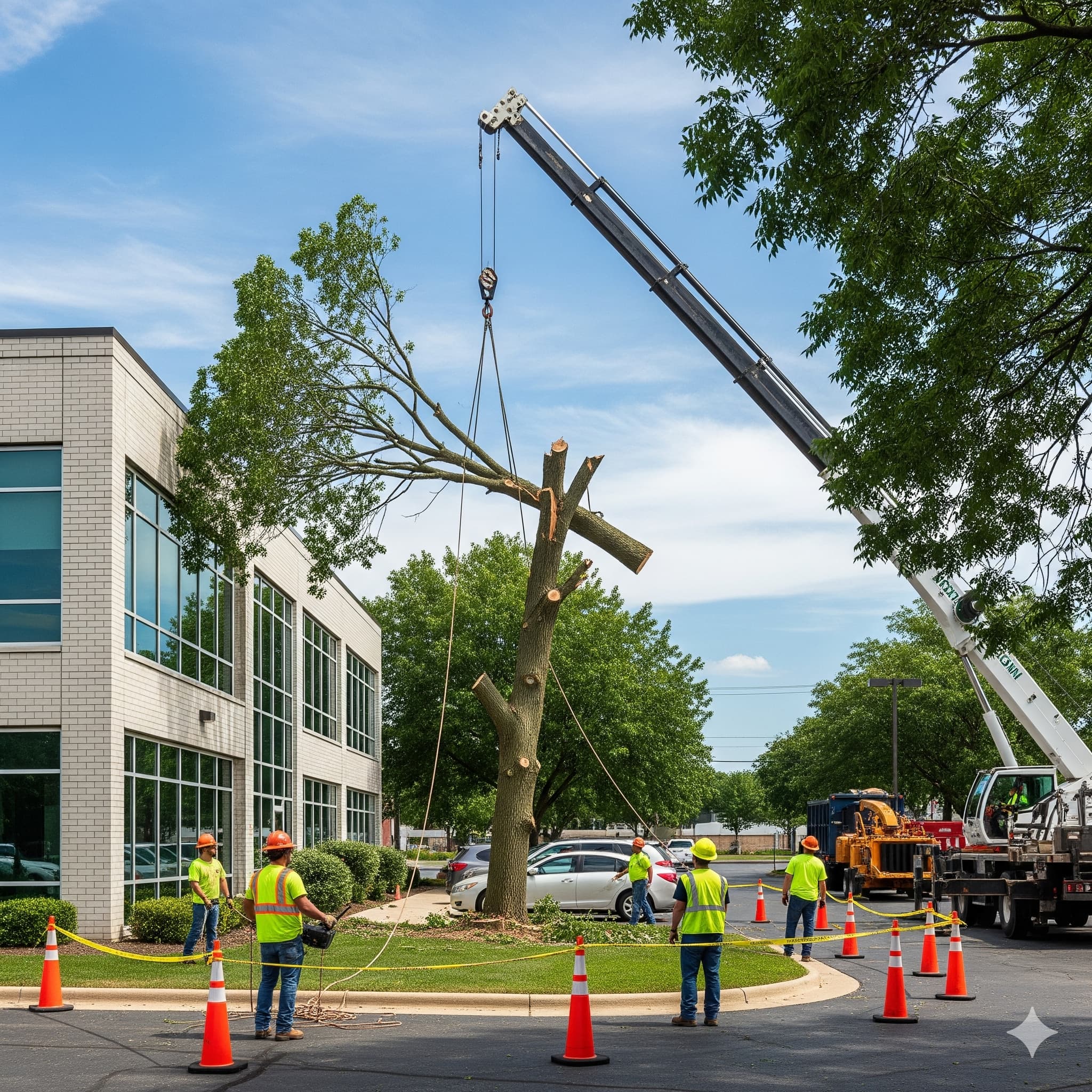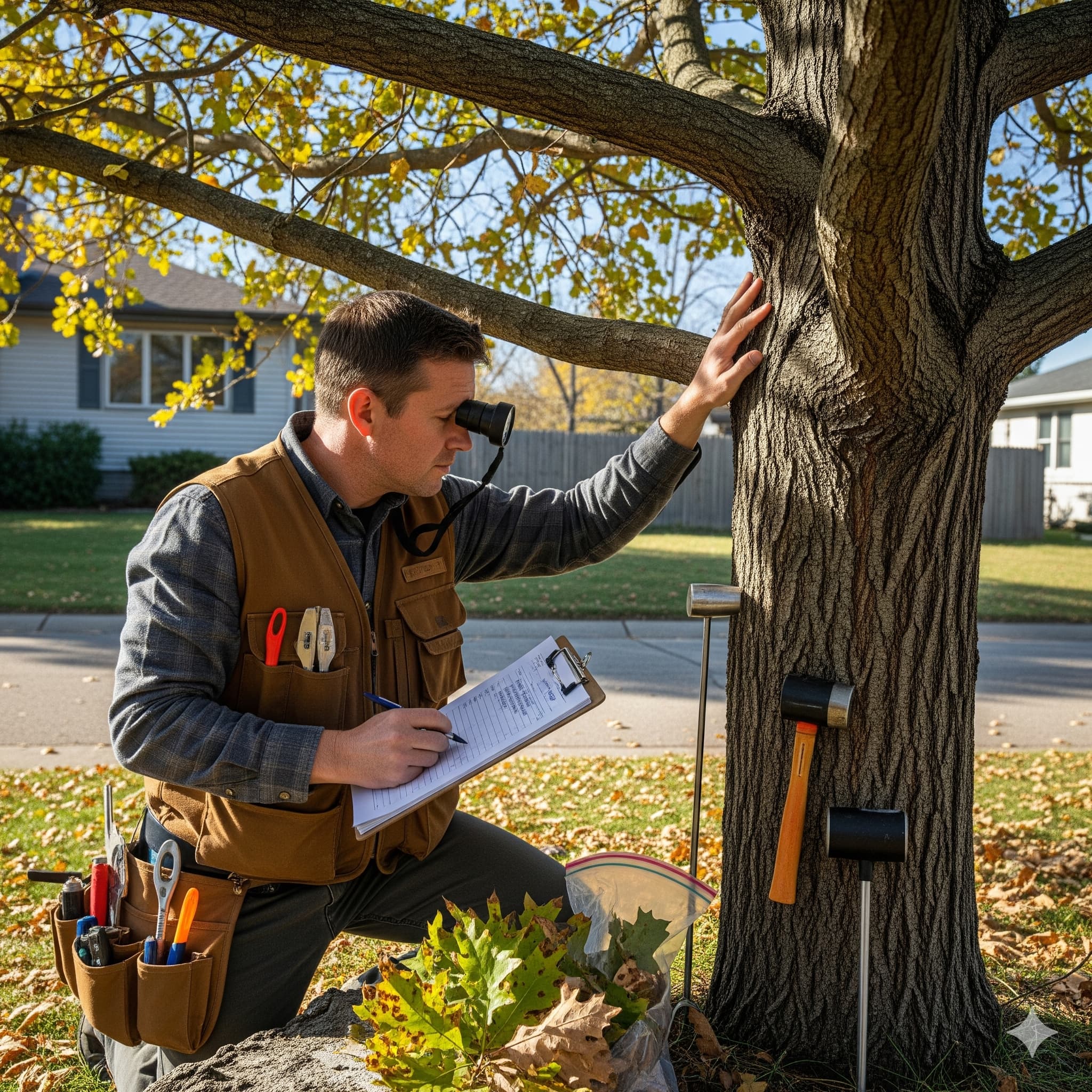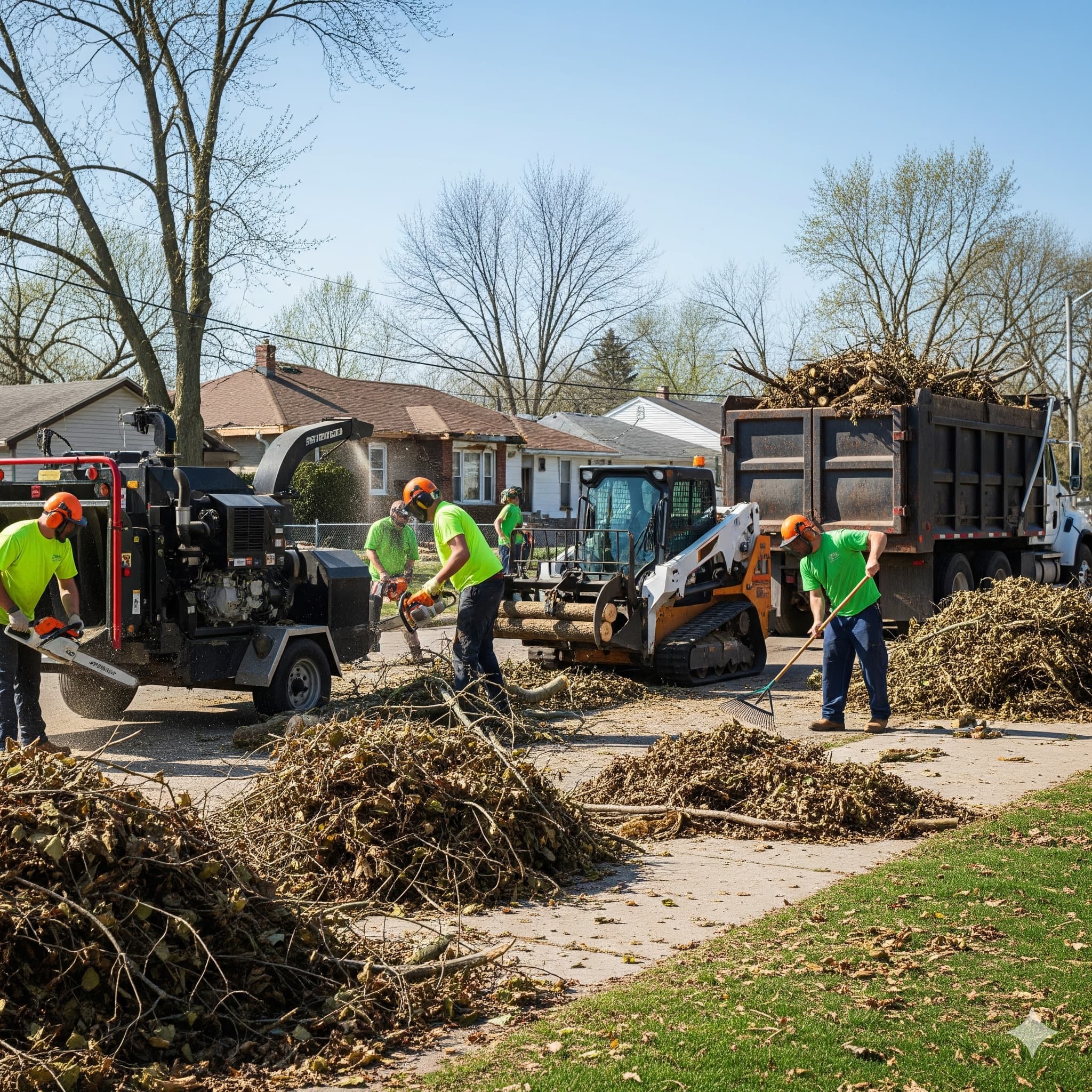
Choosing Tree Removal for Diseased Oaks in New Brighton
When facing diseased oak trees in New Brighton, Minnesota, making the decision for professional tree removal can be challenging but necessary for protecting your property and community. At Majestic Tree Services New Brighton, we help homeowners navigate these difficult decisions while understanding the unique challenges that oak diseases present in our area, from the mature oak stands near Long Lake Regional Park to the established neighborhoods around Silver Lake.
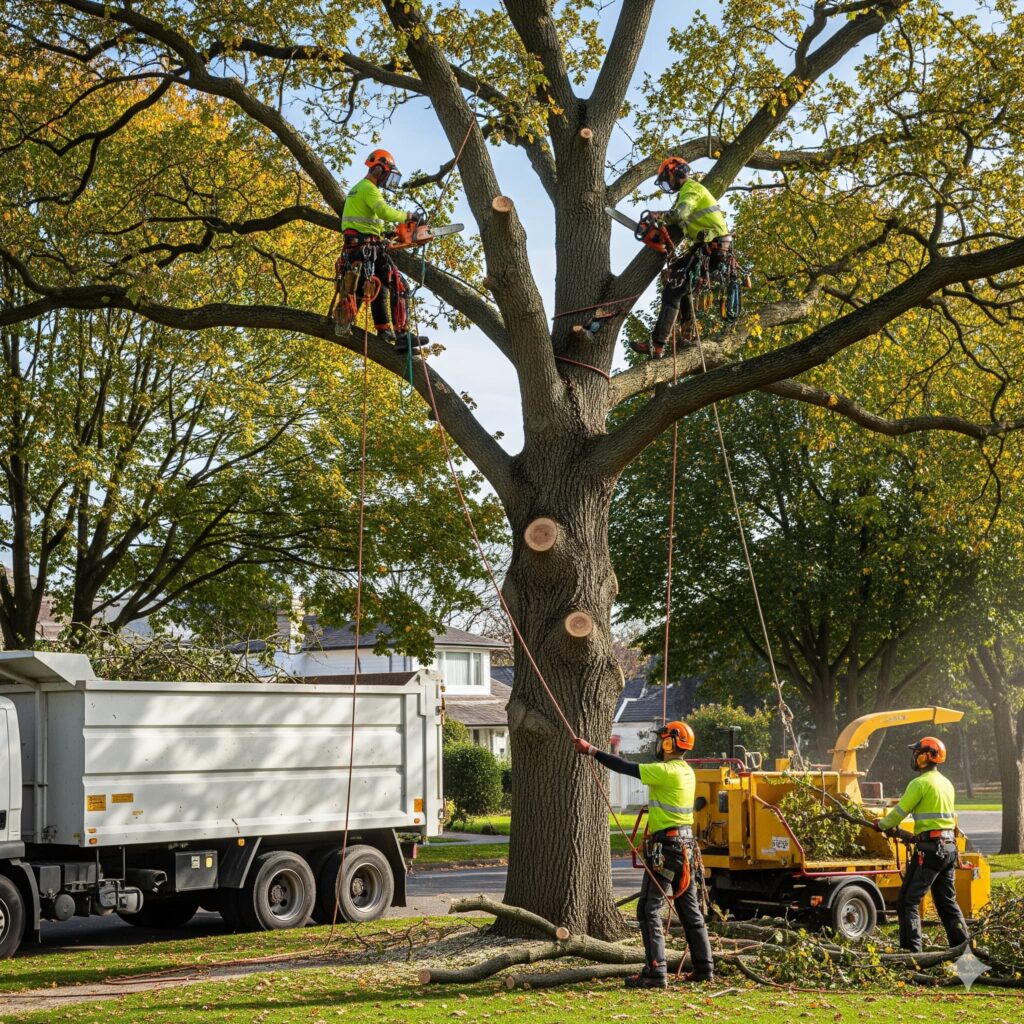
Understanding Oak Diseases in New Brighton
Oak trees throughout New Brighton face several serious disease threats, with oak wilt being the most devastating. This fungal disease affects all oak species found in Minnesota and can kill healthy trees within months. Red oaks, including northern pin oak and northern red oak common in our area, are particularly susceptible and typically die within two months of infection. White oaks, including the bur oaks found throughout New Brighton, are more resistant but can still succumb to the disease over time.
Oak wilt spreads through two primary mechanisms: underground root grafts between trees and above-ground transmission by sap beetles. This dual transmission pathway makes disease management complex and often necessitates tree removal to prevent further spread to healthy trees in the area.
Recognizing When Oak Removal Is Necessary
Advanced Disease Symptoms
Oak trees showing advanced disease symptoms typically require removal to prevent further spread and eliminate safety hazards. Key indicators include leaf browning that starts at tips and margins, premature leaf drop with many leaves remaining green or only partially wilted, and sapwood discoloration showing gray-brown to black streaks in outer wood rings.
In New Brighton’s neighborhoods, where mature oak trees provide significant property value and community character, the decision to remove diseased trees requires careful professional assessment to balance preservation efforts with disease control needs.
Safety Considerations
Diseased oak trees pose increasing safety risks as the disease progresses. Weakened wood structure, reduced root function, and compromised branch integrity create hazards for people, property, and infrastructure. Trees showing significant crown dieback or structural weakness require prompt removal regardless of treatment potential.
Near schools, playgrounds, and high-traffic areas throughout New Brighton, safety considerations often determine removal timelines even when trees might benefit from attempted treatment.
Treatment vs. Removal Decision Factors
Species-Specific Responses
Red oak species, common throughout New Brighton, generally cannot be saved once symptoms appear and require immediate removal to prevent disease spread. These trees die rapidly, making early detection and swift action critical for protecting nearby healthy trees.
White oak species, including the bur oaks prevalent in our area, may respond to therapeutic treatment if caught early with less than 30% crown loss. However, treatment success depends on disease progression, tree health, and prompt intervention by certified professionals.
Location and Spread Risk
Trees located near other valuable oaks require different management approaches than isolated specimens. In densely wooded areas or neighborhoods with numerous oak trees, removal may be necessary even for trees that might otherwise be treatable to prevent disease transmission through root grafts.
Properties near Long Lake Regional Park or in established neighborhoods where oak trees contribute significantly to community character require careful consideration of both individual tree management and broader disease control strategies.
Professional Disease Assessment
Accurate disease diagnosis requires professional expertise and often laboratory confirmation. Oak diseases can be confused with other conditions, including drought stress, construction damage, or other fungal infections. Professional arborists use specific diagnostic criteria and may collect samples for laboratory analysis to confirm oak wilt presence.
Early, accurate diagnosis provides the best opportunity for treatment success or appropriate removal timing to minimize disease spread. We work with certified laboratories and follow established diagnostic protocols to ensure accurate disease identification and appropriate treatment recommendations.
Treatment Options and Limitations
When treatment is viable, fungicide injection with propiconazole can protect healthy trees or slow disease progression in early-stage infections. However, treatment effectiveness depends on timing, tree species, disease progression, and proper application by certified professionals.
Treatment also requires ongoing monitoring and potential re-application every two years, creating long-term management commitments that property owners must consider when making removal decisions.
Disease Control and Prevention
Root Graft Disruption
Successful oak disease management often requires disrupting root graft connections between diseased and healthy trees. This process involves trenching or plowing to depths of five feet or more to sever underground connections that facilitate disease spread.
Root graft disruption must be performed by qualified professionals using specialized equipment and following Minnesota DNR guidelines. This management strategy often makes the removal of some healthy-appearing trees necessary to create effective disease barriers.
Proper Removal and Disposal
Oak trees removed due to disease require special handling to prevent continued spore production and disease spread. Infected wood must be properly disposed of or treated on-site through debarking, chipping, or covering with plastic to prevent beetle access to fungal spores.
Timing of removal and disposal is critical, as infected oak logs can produce spores that spread the disease if not properly managed. We follow all Minnesota Department of Agriculture guidelines for infected wood handling and disposal.
Pruning and Wound Prevention
Oak wilt prevention includes strict pruning timing restrictions. Oak trees should never be pruned from April through July when sap beetles are most active and trees are most susceptible to infection. Emergency pruning during high-risk periods requires immediate wound treatment with appropriate sealers.
Property owners throughout New Brighton must understand these timing restrictions to prevent accidentally introducing oak wilt to healthy trees through inappropriate pruning activities.
Community Impact and Considerations
Oak tree removal decisions affect not only individual properties but entire neighborhoods and community character. New Brighton’s mature oak canopy contributes significantly to property values, energy savings, and quality of life factors that residents value highly.
Professional disease management balances individual tree preservation with community-wide disease control needs. Sometimes removing otherwise treatable trees becomes necessary to protect larger populations of healthy oaks in the area.
Replacement Planning and Species Diversity
When oak removal becomes necessary, planning for appropriate replacement helps maintain community forest benefits while reducing future disease risks. Species diversification reduces the impact of species-specific diseases and creates more resilient urban forests.
We provide guidance on suitable replacement species that complement New Brighton’s existing landscape while supporting long-term forest health goals. Proper species selection and placement help prevent future disease problems while maintaining desired landscape characteristics.
Legal and Regulatory Compliance
Oak disease management in Minnesota follows specific regulatory guidelines established by the Minnesota Department of Natural Resources and the Department of Agriculture. Professional tree removal services ensure compliance with all applicable regulations while providing necessary documentation for insurance and municipal requirements.
Property owners facing oak disease issues benefit from working with licensed professionals who understand regulatory requirements and can navigate the complex decisions involved in disease management.
Making Informed Removal Decisions
Choosing tree removal for diseased oaks requires balancing multiple factors, including safety, disease control, property protection, and community impact. Professional assessment provides the expertise necessary to make informed decisions that protect both individual properties and the broader community.
We work with New Brighton residents to assess diseased oak trees, explore treatment options where viable, and provide professional removal services when necessary. Many homeowners searching for tree removal near me find that local expertise ensures both safe removals and responsible management of diseased trees. Our approach prioritizes safety while preserving as much of the community’s valuable oak resource as possible through science-based disease management strategies.
When oak disease threatens your trees, professional evaluation and appropriate action protect your property and help preserve New Brighton’s beautiful urban forest for future generations.
